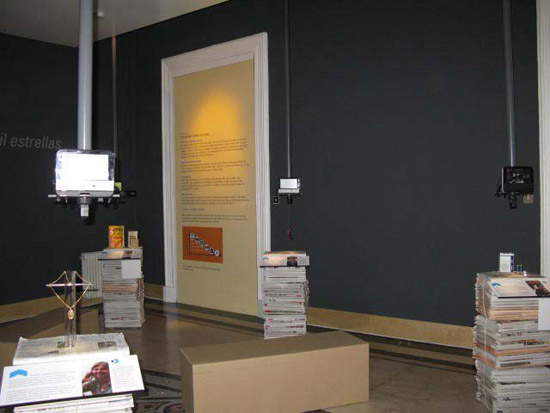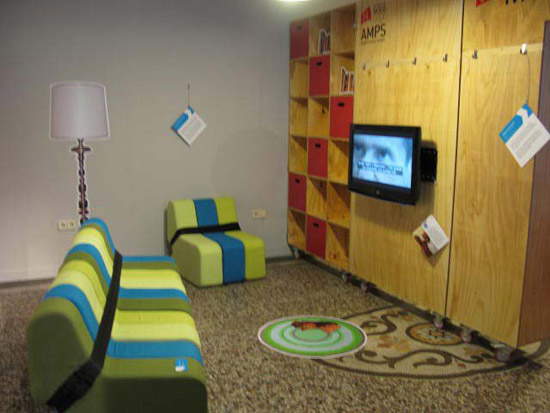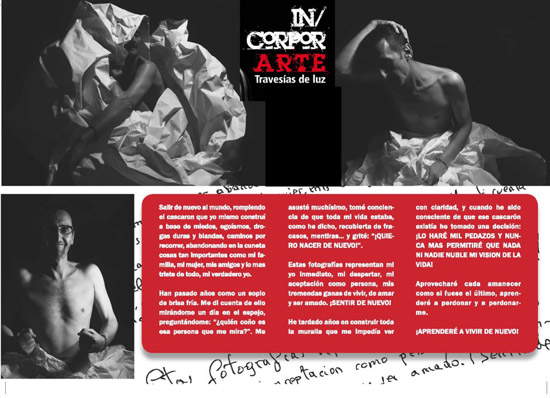Social participation in a museum
How important is it to bring social issues into a museum’s programs? We find out with this interesting article written by Sara Valverde and published in Descubrir el arte. Here is the link to the original. I translated it for you! Enjoy reading :)
For more than a decade now, the museum has no longer been an exclusive and exclusionary space, but has become a place where all sectors of society have weight.
Paloma Muños-Campos, coordinator of the Social Responsibility Program at the Museum of Decorative Arts in Madrid, and Alicia Vázquez, a technician in its Dissemination and Communication department, talk to Descubrir el Arte about the initiatives and projects they have been carrying out for some years now with emerging artists and with groups excluded or at risk of social exclusion.
The Museum of Decorative Arts is located at 12 calle Montalbán and is a state cultural institution that completes the artistic landscape of the central area of Madrid, along with the Prado Museum or the Reina Sofia Museum. These have in common the idea of becoming dynamic spaces where art education is aimed at both younger and older people, thus eliminating the concept of being mere containers of permanent exhibitions.
The educational line of social responsibility was introduced into the programming of museum activities a decade ago, and since then, workshops have been organized for the differently abled, pensioners and children. In the specific case of the Museum of Decorative Arts, educational paths through the museum’s halls for people with special needs began to be created, and this was complemented by creative activity. However, it was 2010 that was the breakthrough year for the museum, with the exhibition Diseño contra la pobreza: una historia de superación (Drawing against Poverty: a history of overcoming). A project that coincided with the European Year against Poverty and Social Exclusion. The idea was to work with homeless people to show them that they could be the protagonists. Also, with this, we were trying to interrupt the prejudice of certain groups who think that the museum, because of possible physical, conceptual or intellectual limitations, has nothing to offer these people or that they have no weight in the museum’s projects, explains Paloma Muños-Campos.
 |
| Image taken again from the project Diseño contra la pobreza: una historia de superación |
Perhaps the highlight, as Muños-Campos points out, coincided with the first awareness, since the museum staff has no specific training; therefore, they counted on the collaboration of psychologists and mediators. Thanks to them, a substantial part of the project was developed: the direct testimonies collected in Con sus propias palabras (In Their Own Words).
The design of this first major exhibition, already included in the social responsibility program, consisted, as Muños-Campos says, of a competition of ideas for architects and designers to contribute proposals to improve the habitability of transitional houses, places of help where people coming from the street begin their process of adaptation in order to integrate back into society.
 |
| Image from the exhibition Diseño contra la pobreza: una historia de superación |
The first phase of the project brought together numerous proposals for interior designs, with which an initial exhibition was organized. Later, the organizing group selected a number of designs to be executed to scale for a second exhibition, Muños-Campos adds. The latter, which was more comprehensive, was structured in various sections, showing the transition from the street to the shelter, and from it to integration into society. This was accompanied by the direct testimonies of homeless people and the objects they had chosen to represent their own life on the street explains Alicia Vázquez.
In addition, the collaboration of other social organizations was indispensable: It was the work of so many people. We needed almost two years to carry it out. The participation in the project of Fundación Rais, Fundación Arrels, Provivienda y Cáritas turned out to be fundamental, Alicia Vázquez points out.
Another important aspect that Alicia Vázquez and Paloma Muñoz-Campos point out is how, since Diseño contra la pobreza, other initiatives have arisen that have enabled the museum to develop a long-term program of social responsibility. One of these is the project in collaboration with Centro Abierto Casa de Campo,Enganchados al Arte (Art-addicted), which consists of exhibiting plastic proposals to convey the experiences of drug-addicted people in the rehabilitation process; the latest and third edition of this proposal was the exhibition Mi mundo (My World).
 |
| Poster of one of the exhibitions in the Enganchados al Arte program. |
However, programming does not stop as we continue to create projects and diversify lines at this time. In parallel, for years, the museum has been developing another program that allows the public to collaborate with the conceptual construction of the institution: Diseño y pedagogÃa (Drawing and Pedagogy), which involves universities and drawing schools in the Community of Madrid and other educational organizations. In this case, the methodology is similar to that applied in the social responsibility program: the museum offers itself as a subject for students and professors to work on developing their own readings about the institution, Alicia Vázquez concludes.
Warning: the translation into English of the original Italian article was created using automatic tools. We undertake to review all articles, but we do not guarantee the total absence of inaccuracies in the translation due to the program. You can find the original by clicking on the ITA button. If you find any mistake,please contact us.





























